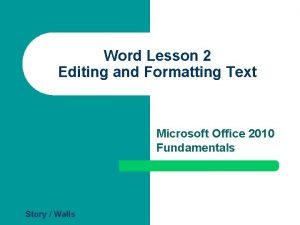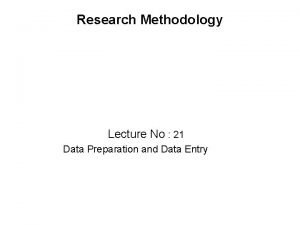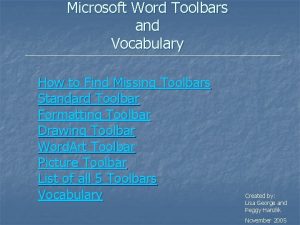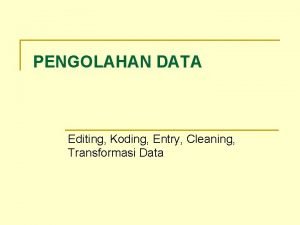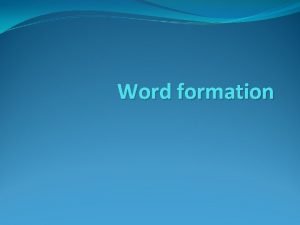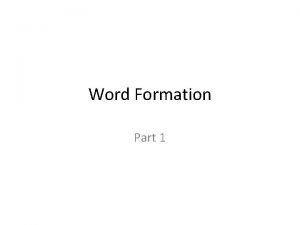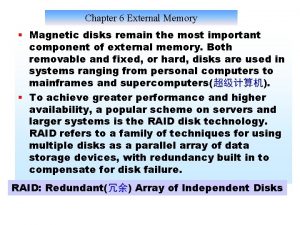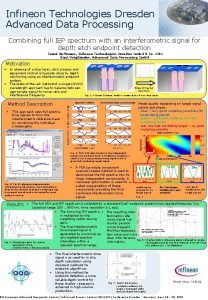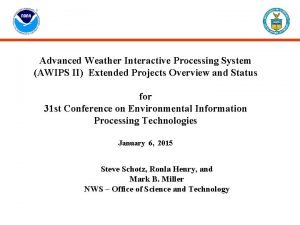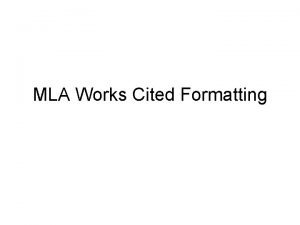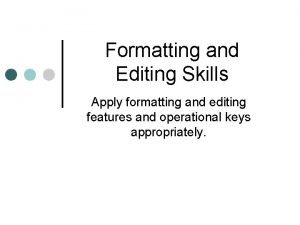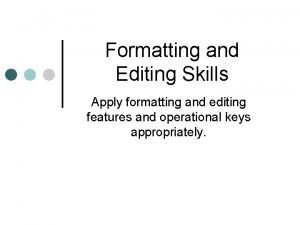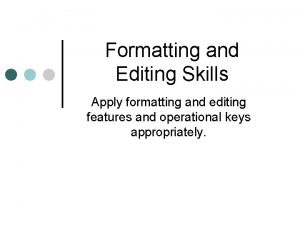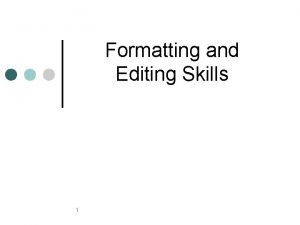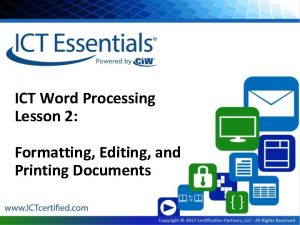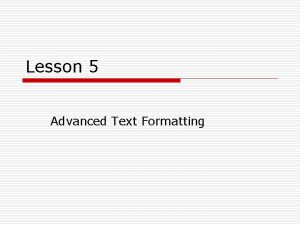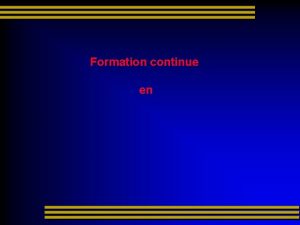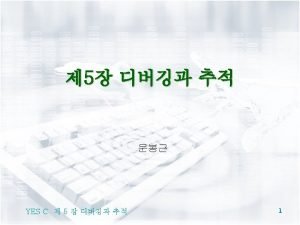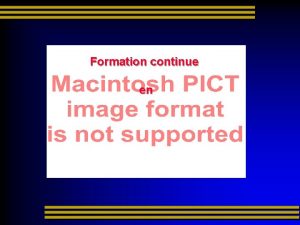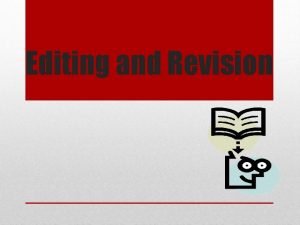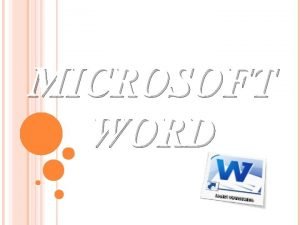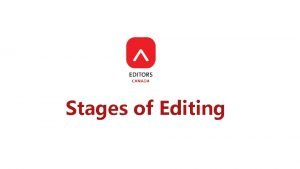Continue Word Processing Advanced Editing and Formatting Starting
















- Slides: 16

Continue Word Processing Advanced Editing and Formatting

Starting Document to be Edited and Formatted This is an original document, before editing and formatting

Inserting Bullets and Numbered Lists • Use bulleted or numbered lists to identify important steps or points • Word either automatically creates a list while you type or. . . • . . . bullets and numbers can be added quickly to existing lines of text Use either button on the Formatting toolbar to insert or convert select text

Templates • A template is a collection of styles, keyboard assignments, and toolbar assignments saved to a file —making them readily available and saving time • Word provides templates for common types of documents, saved in special files with a. dot extension • Templates can be created and saved from scratch, can be based on an existing document, or can be based on another template – Assign templates new file names—with a. dot extension—to avoid confusion with other files

Templates and Template categories available in Word

Formatting Reports-Page Numbers guide readers, allowing easy locating of information Word provides a quick and easy way of adding page numbers—choose the Page Numbers command on the Insert menu Page numbers can be positioned and aligned to best fit the document

Formatting Reports-Page Breaks • Page breaks mark where one page ends and another begins • Word has two types of page breaks – Soft page breaks are inserted automatically by Word based on margins, fonts – Hard page breaks are inserted manually – In Print Layout view, in Print Preview, and in a printed document, text after a page break appears on a separate page – In Normal view an automatic page break appears as a single dotted line across the page, and a manual page break appears as a single dotted line marked Page Break

Formatting Reports-Section Break • A Section Break stores formatting elements for the specific area of a document preceding it • Appears as a double dotted line with the words Section Break • Four types of section breaks include – Next page—inserts a break and starts a new section on the next page – Continuous—inserts a break and starts a new section on same page – Even page—inserts a break and starts the new section on the next even-numbered page – Odd page—inserts a break and starts a new section on the next odd-numbered page

Headers and Footers • Headers display in the margin at the top of a page • Footers display in the bottom margin • Headers and footers display information about the document such as page numbers, title, and subject matter • Headers and footers can be the same throughout the document or can be changed if needed • Text and graphics in a header or footer are automatically aligned to the left • Header or footer positions can be changed

Placement of Headers and Footers The example shows header and footer placement on a page, inside the top and bottom margin

Header and Footer Toolbar Header and Footer toolbar with a table explaining the function of buttons on the toolbar

Footnotes and Endnotes • Footnotes are references or explanations, usually appearing at the bottom of a page • Endnotes are references or explanations that typically appear at the end of a document • Footnotes and endnotes can be used in the same document • Footnotes and endnotes consist of two linked parts – Note reference mark – Corresponding note text • Word automatically numbers or marks footnotes and endnotes

Footnotes and Endnotes Linked Parts Footnote reference mark in the text Footnote text appearing at the bottom of page

Creating a Table of Contents • To create a table of contents – Specify entries – Build the entries into a table of contents • Tables of Content can be based on pre-defined headings • Word searches for pre-defined headings, userdefined styles, and the specified table of contents entries • Word inserts the entries into the document as a TOC field • TOC field can only be generated if there are styles applied to the document designating headings and subheadings

Creating an Index • An index is a listing of the locations of key words, placed at the end of a long document • An index allows the reader to quickly find the page number for a topic • To create an index – Mark the words and phrases to be included – Build the index—choose an index design and Word collects the entries, sorts them alphabetically, identifies the page numbers, finds and removes duplicates, and displays the index in the document.

Creating a Table of Contents and Index and Tables dialog box
 New document word
New document word Central editing in research methodology
Central editing in research methodology Linear and nonlinear editing
Linear and nonlinear editing Ms word toolbar names
Ms word toolbar names Pengolahan data editing coding entry cleaning
Pengolahan data editing coding entry cleaning Adventure word formation
Adventure word formation Diesel word formation
Diesel word formation Magnetic disk read and write mechanism
Magnetic disk read and write mechanism How to use punctuation in quotes
How to use punctuation in quotes Advanced image processing techniques
Advanced image processing techniques Advanced data processing
Advanced data processing Advanced weather interactive processing system
Advanced weather interactive processing system High boost filtering matlab
High boost filtering matlab Secondary processing of wheat
Secondary processing of wheat Batch processing and interactive processing
Batch processing and interactive processing Apa titles
Apa titles Work cited in mla format
Work cited in mla format
